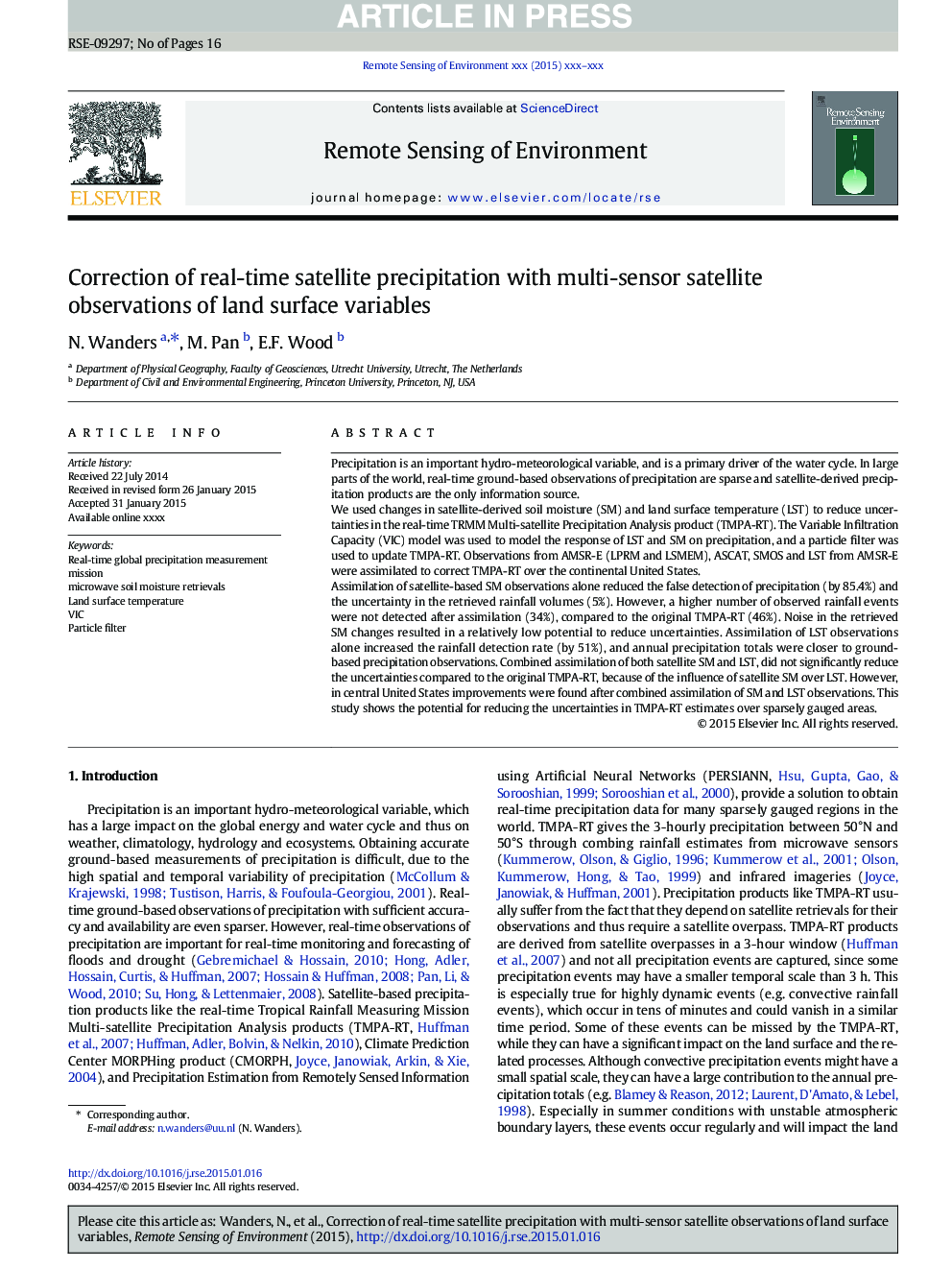| Article ID | Journal | Published Year | Pages | File Type |
|---|---|---|---|---|
| 6345984 | Remote Sensing of Environment | 2015 | 16 Pages |
Abstract
Assimilation of satellite-based SM observations alone reduced the false detection of precipitation (by 85.4%) and the uncertainty in the retrieved rainfall volumes (5%). However, a higher number of observed rainfall events were not detected after assimilation (34%), compared to the original TMPA-RT (46%). Noise in the retrieved SM changes resulted in a relatively low potential to reduce uncertainties. Assimilation of LST observations alone increased the rainfall detection rate (by 51%), and annual precipitation totals were closer to ground-based precipitation observations. Combined assimilation of both satellite SM and LST, did not significantly reduce the uncertainties compared to the original TMPA-RT, because of the influence of satellite SM over LST. However, in central United States improvements were found after combined assimilation of SM and LST observations. This study shows the potential for reducing the uncertainties in TMPA-RT estimates over sparsely gauged areas.
Related Topics
Physical Sciences and Engineering
Earth and Planetary Sciences
Computers in Earth Sciences
Authors
N. Wanders, M. Pan, E.F. Wood,
